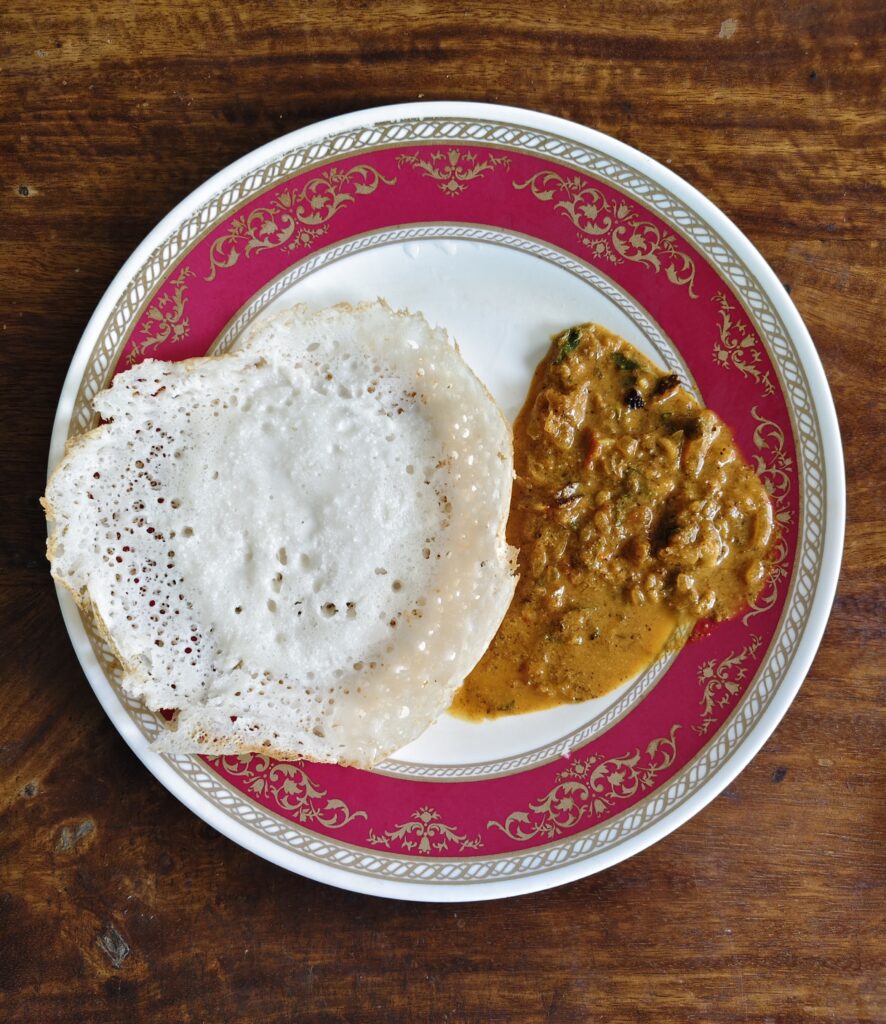Maasi also known as dry fish tuna is not easy to come by in India. Only certain parts of India can have access to it. We got our maasi from Nagercoil, Tamilnadu. Most of the coastal parts of south India sell this but you need to know the right retailer or wholeseller for this. And if you do get your hands on this precious little stone-like dried tuna fish (maasi), you are in a treat of your life in being able to create a magical sambal for appam.
This is how it looks like in it’s raw state. Next to it is how it looks like when broken into rough-sized crystals. They look so beautiful when broken down. They look as good as red ruby.
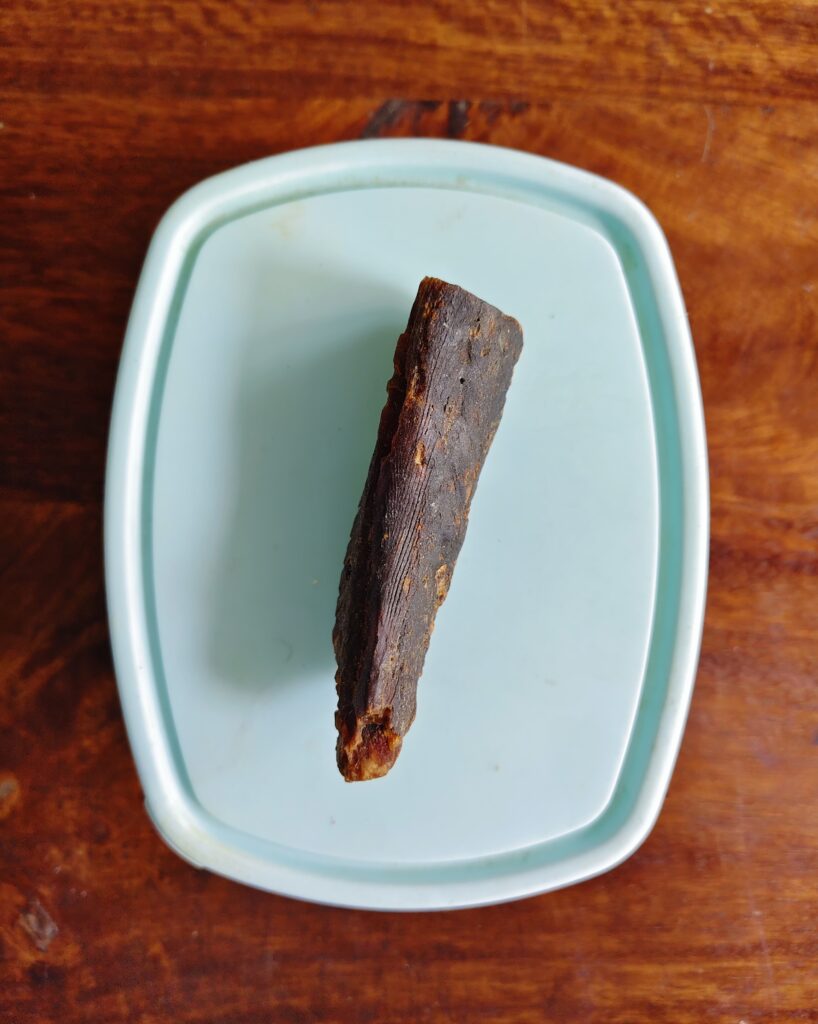
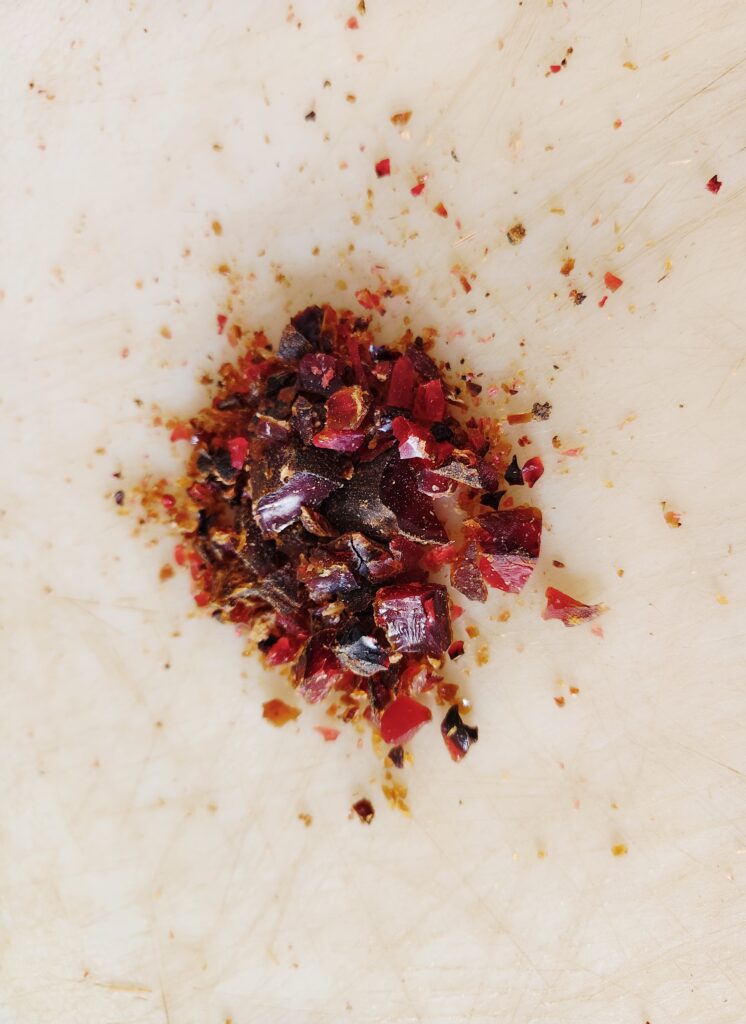
Before we dive into the recipe let us learn a little background about this unique seafood south Indian dish.
Let’s start where Maasi comes from. It’s basically Maldive fish, which is tuna that’s been gutted, smoked, and sun-dried—the kind of fish that lasts forever and packs a mighty umami punch. Originally from the Maldives, this little preservative marvel became a kitchen staple in Sri Lanka and southern Tamil Nadu. Historically, Maasi (or Masi Karuvadu, as Tamil folks call it) was valued not just as food, but as a way to preserve and transport fish—especially across maritime trade routes connecting islands and coastal Tamil regions.
Over time, communities in places like Pudukkottai, Ramnad, and Tirunelveli started using it in chutneys, poriyal, curries—and that includes Maasi Sambal. It’s become a beloved accompaniment in these local cuisines.
As for its connection to appam, Maasi Sambal is a perfect match. Appam, whose roots reach back into ancient Tamil Sangam literature (yep, it’s been around forever), is a soft, fermented rice-and-coconut crepe that loves to get dipped into something bold.
Today it’s more than just taste—it’s cultural memory, family ritual, and culinary ingenuity rolled into one. If you dip your appam and feel that crisp, smoky burst—you’re tasting centuries of coastal trade, preservation savvy, and home cooking all at once.
Ok enough of the Maasi knowledge. Let’s now dive into the delicious recipe. My mouth waters even when writing the recipe.
Ingredients:
- 1 Maasi (dry fish Tuna)
- 2-3 garlic finely chopped
- 1 red onion finely chopped
- 1 tomato finely chopped
- A bunch of curry leaves roughly chopped
- 1 cup coconut milk
- 1 cinnmon stick
- 1 tbsp red chilli powder
- 1 tsp turmeric powder
- salt to taste
Recipe:
Finely chopped onion, garlic and tomato.
Roughly chop curry leaves and keep the dry masalas ready. The dry masalas must consist of red chilli powder, turmeric powder, cinnamon and salt.
Keep one cup coconut milk ready.
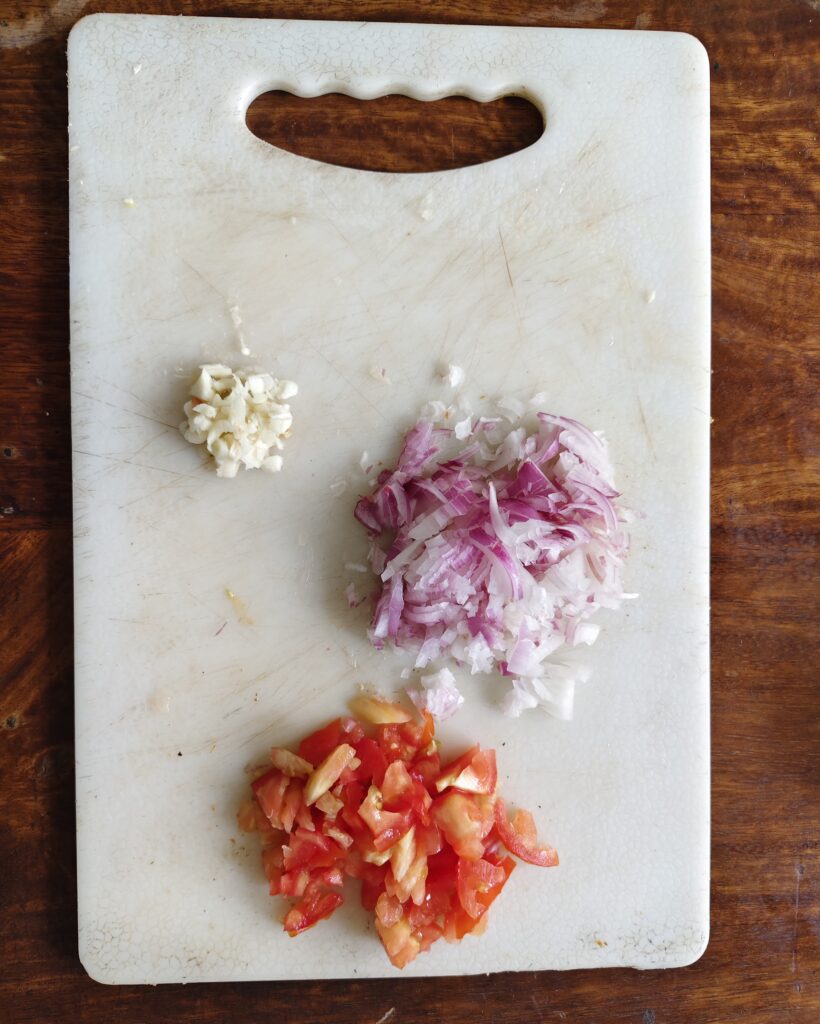
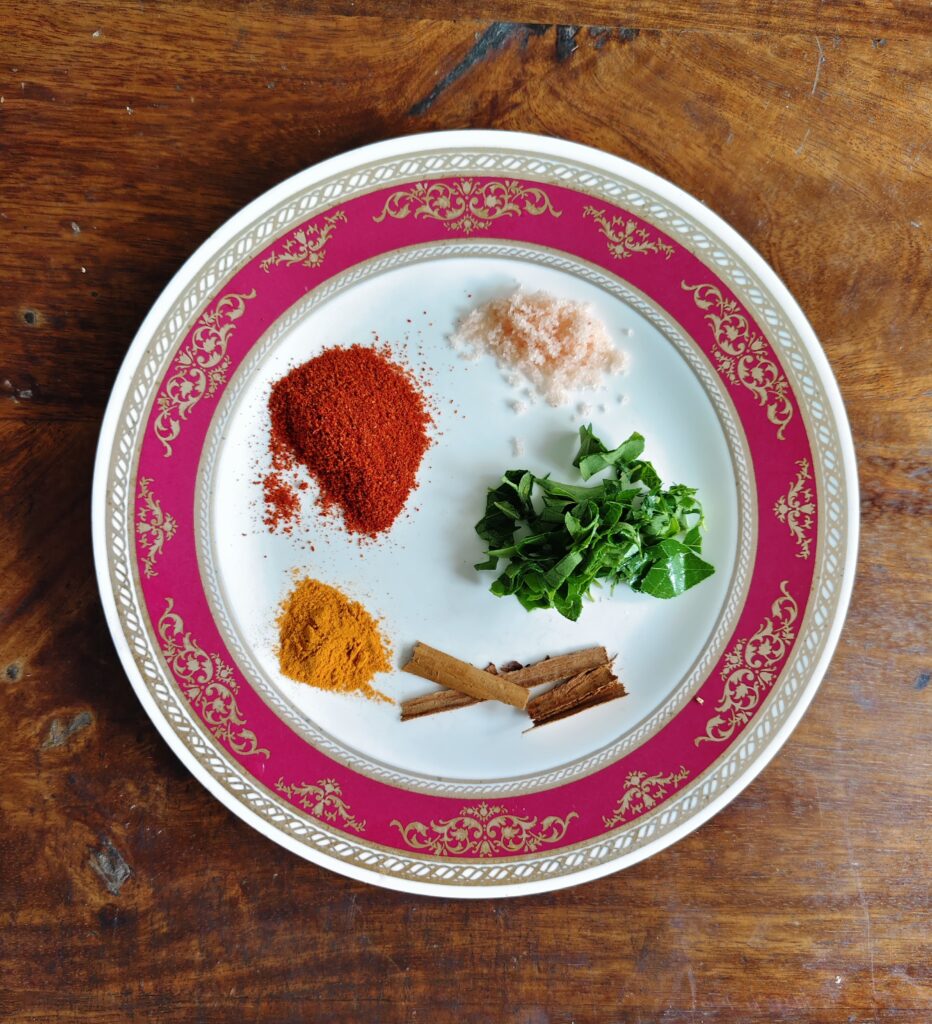
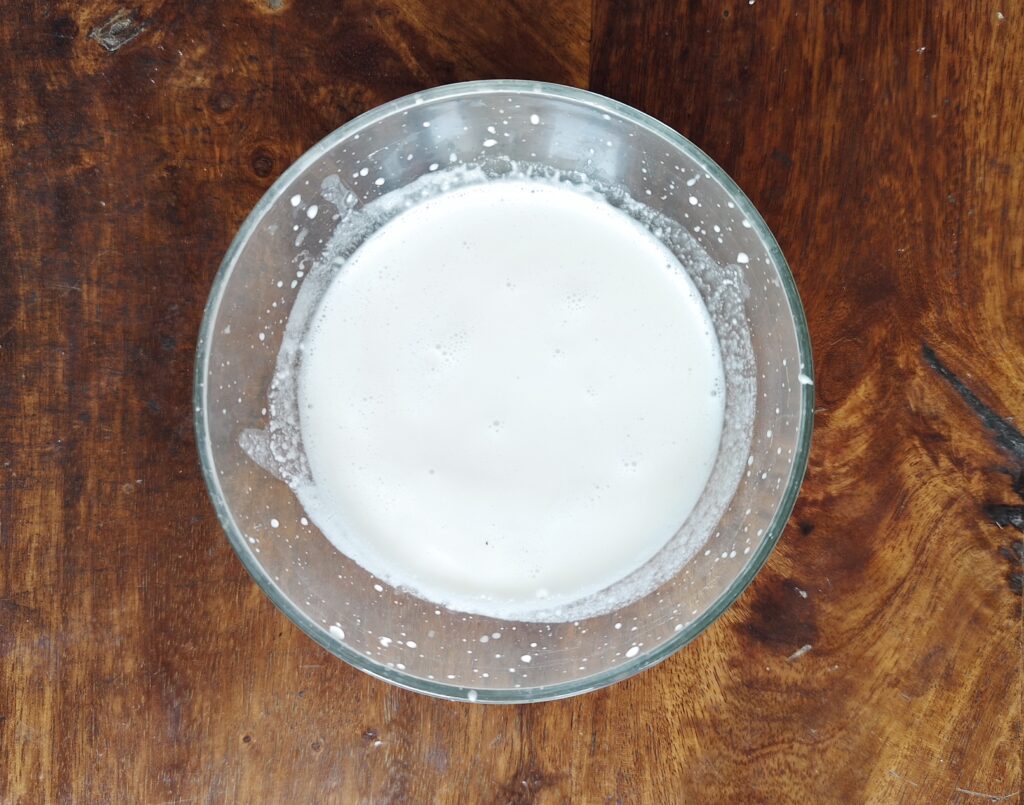
Roughly break the whole maasi (dry fish tuna) with a pestel and then grind the rough pieces in a grinder into a fine powder.
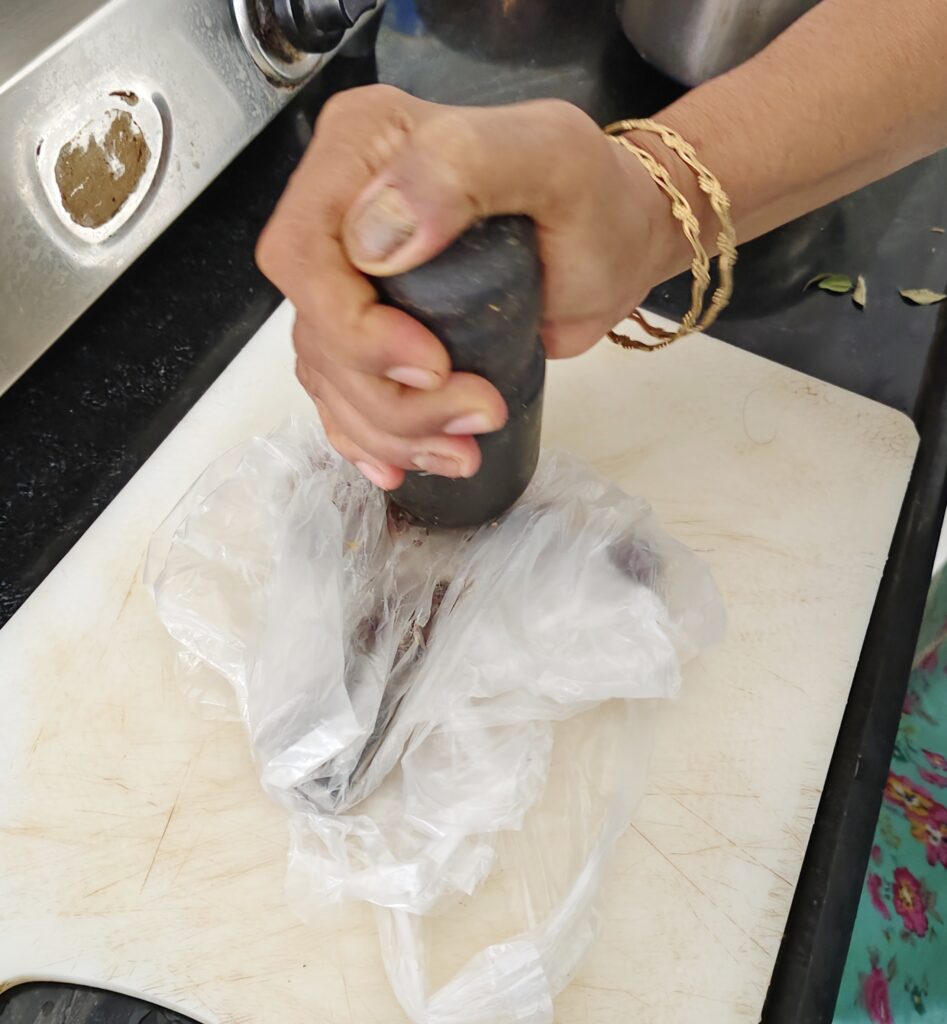
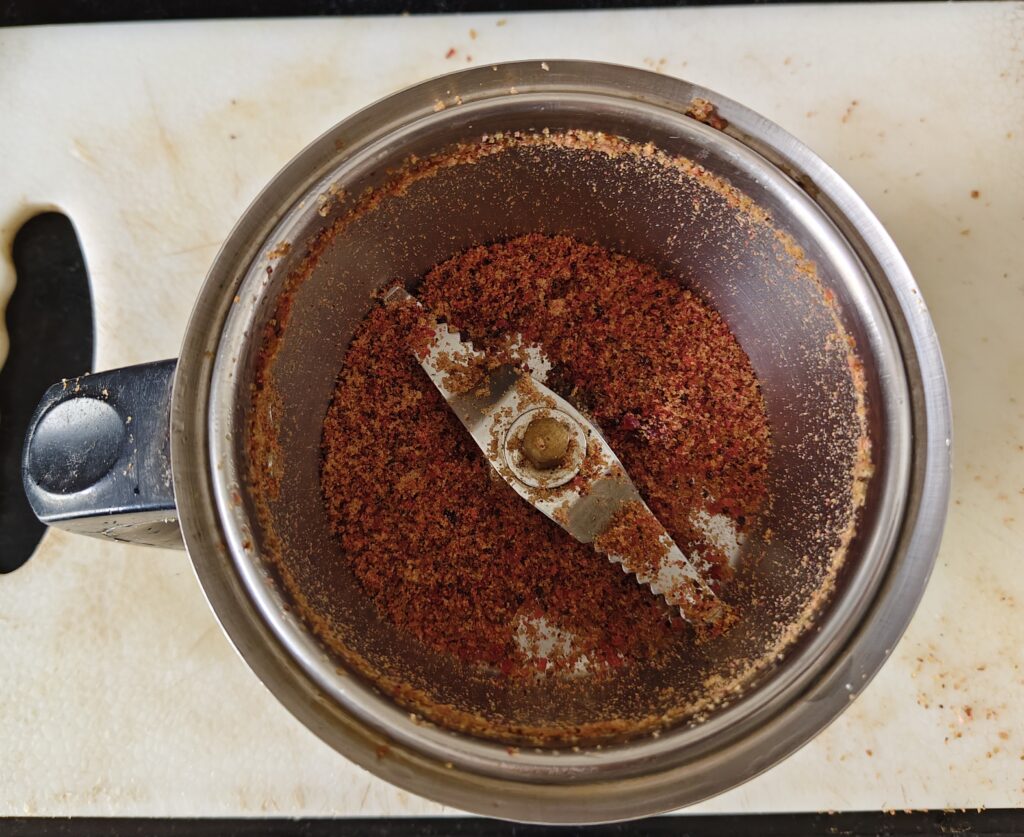
Heat a frying pan and add oil into it. Add chopped garlic and cinnamon and saute for half a minute.
Then add onions and saute it until the onions are translucent. Then add tomatoes and salt and saute again.
Follow it by adding the powdered tuna and mix it well.
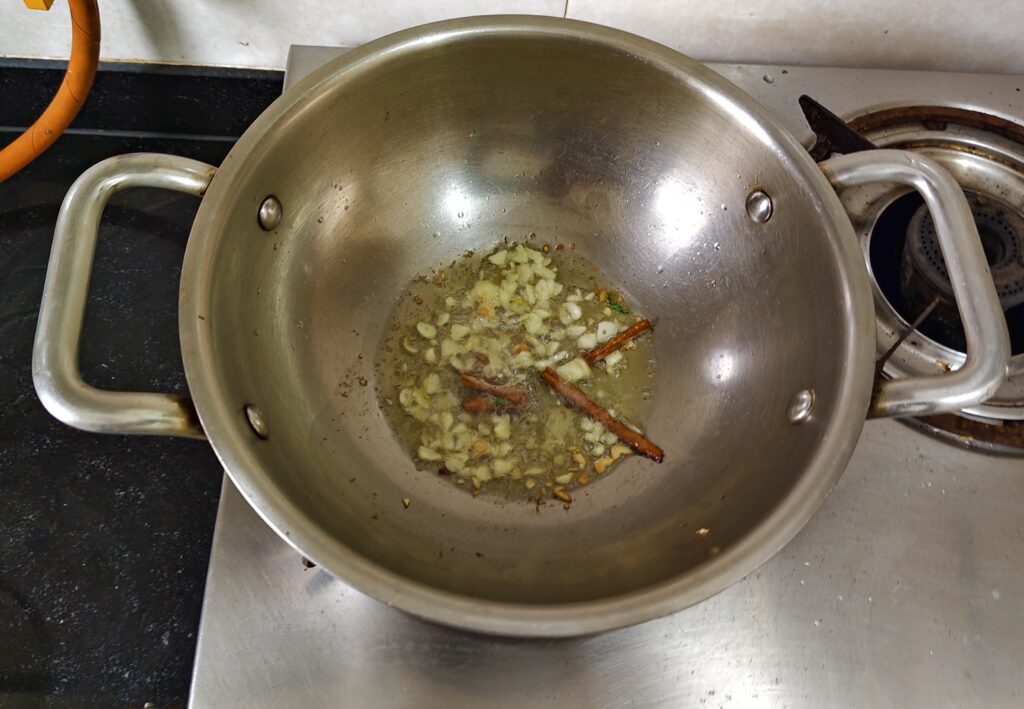
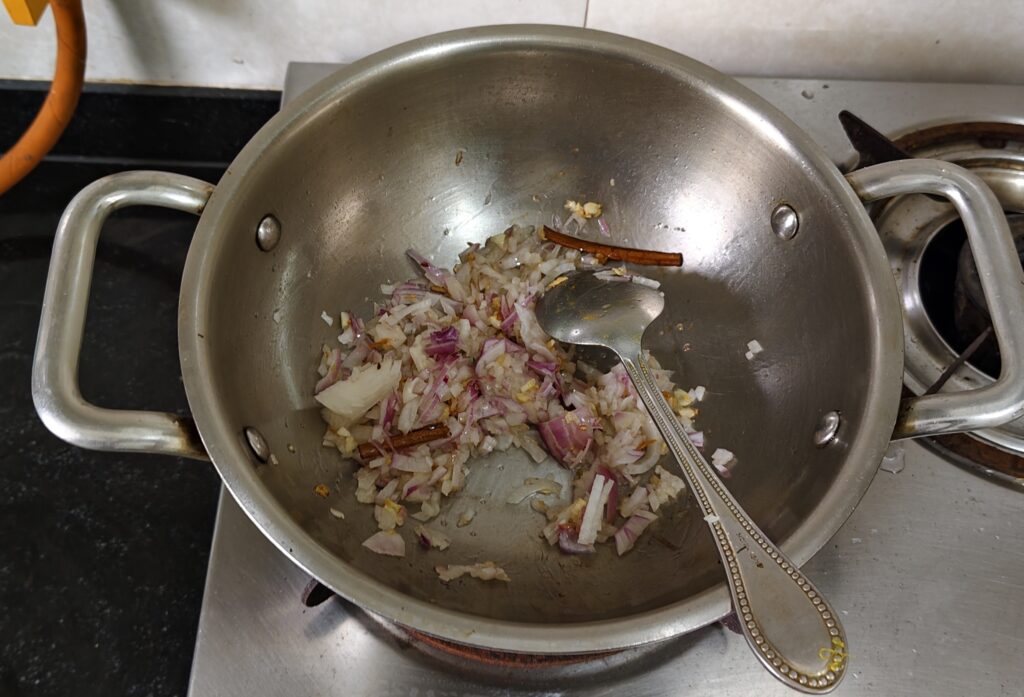
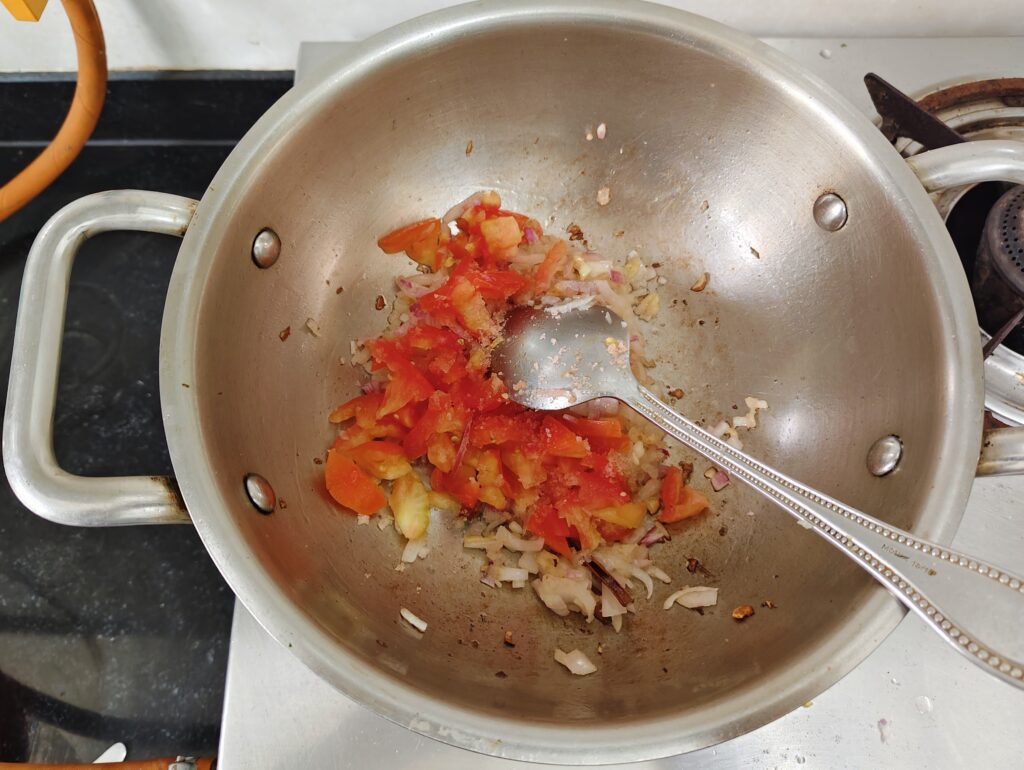
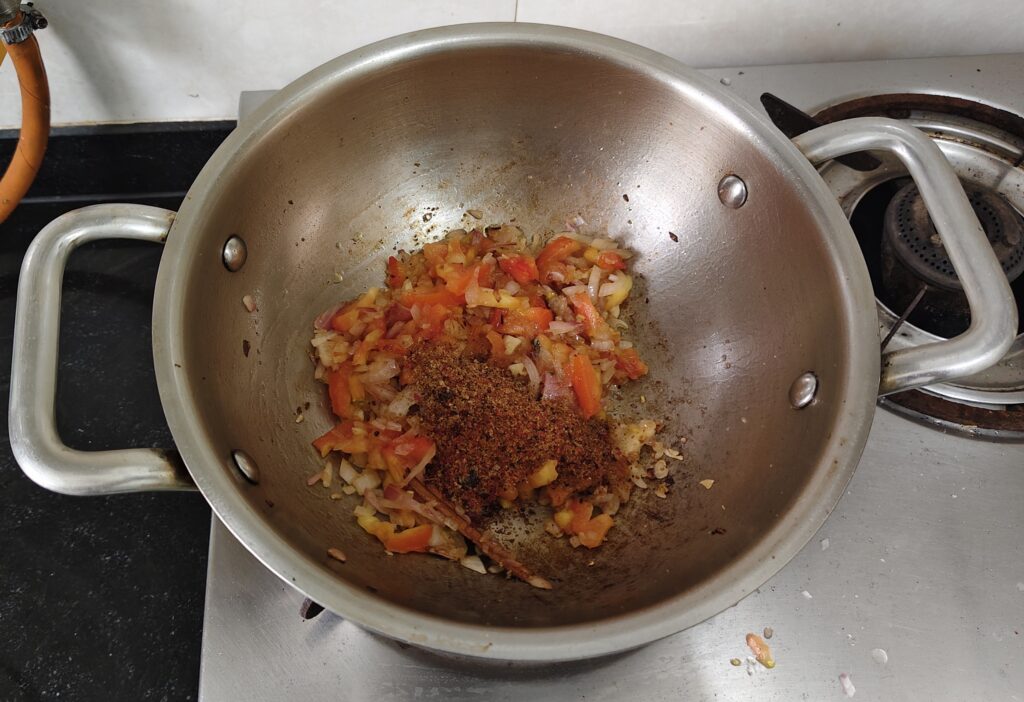
After mixing the maasi powder well, add the dry masalas and the chopped curry leaves.
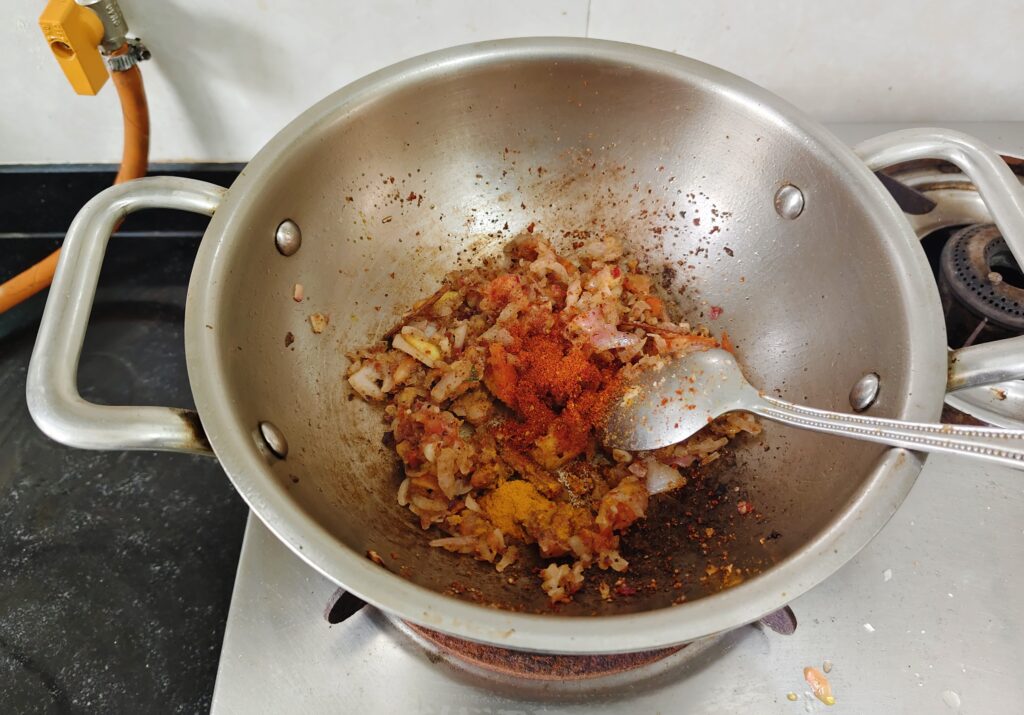
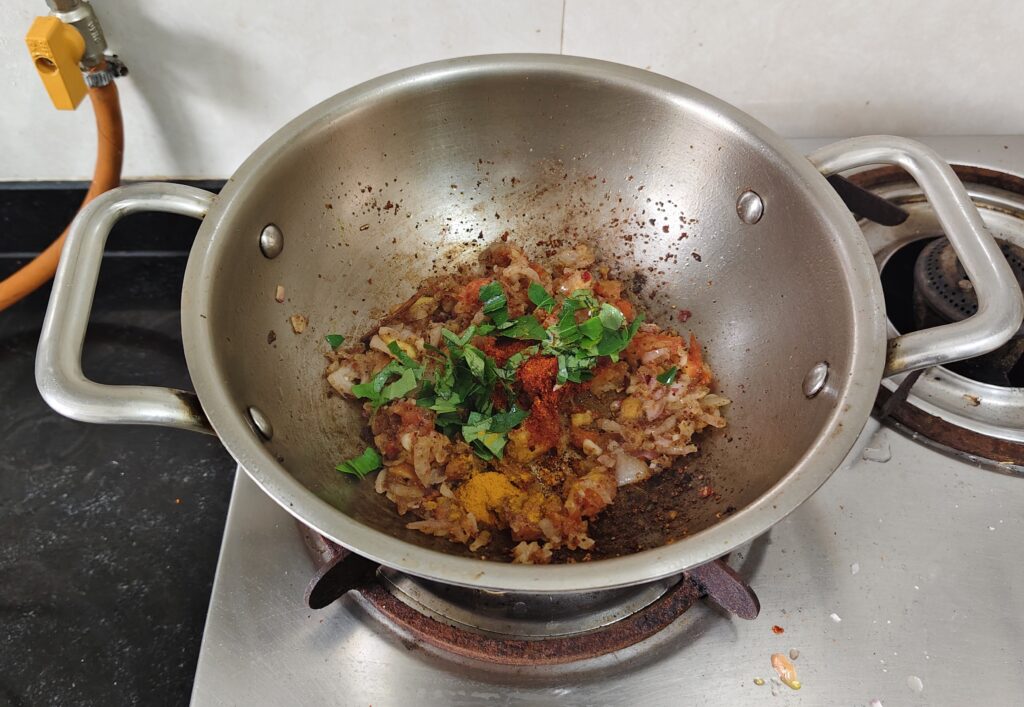
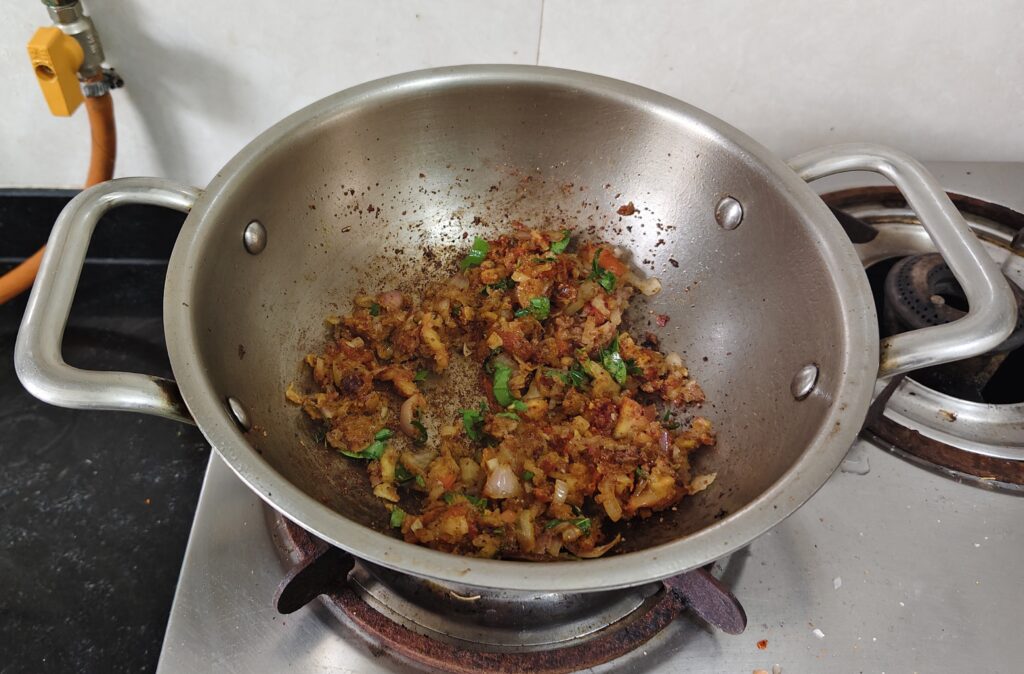
Add 3/4 cup of water and mix well. Let it simmer for a while you can close the pan with lid.
After around 10 mins of simmering you must now add coconut milk.
TIP: Do not cook for a longer time after adding coconut milk. Hence adding water and cooking the ingredients was necessary. Once you’ve added the coconut milk, mix it well and let it be on the stove for 2 mins. Then switch off the stove and keep it covered for 2 mins.
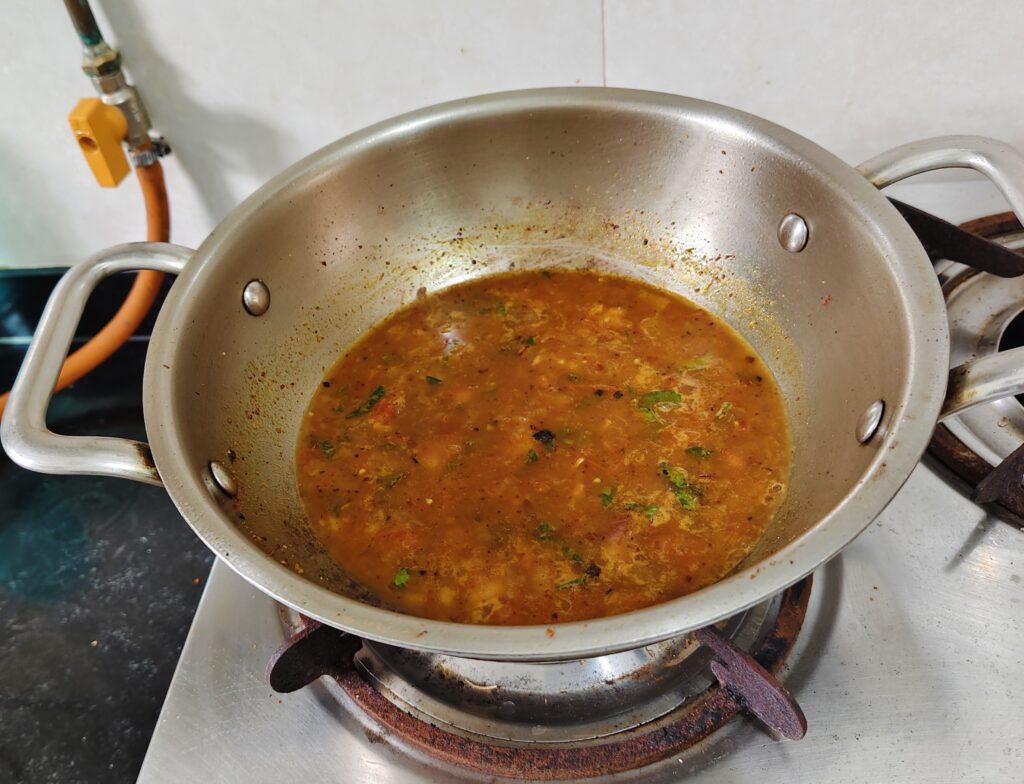
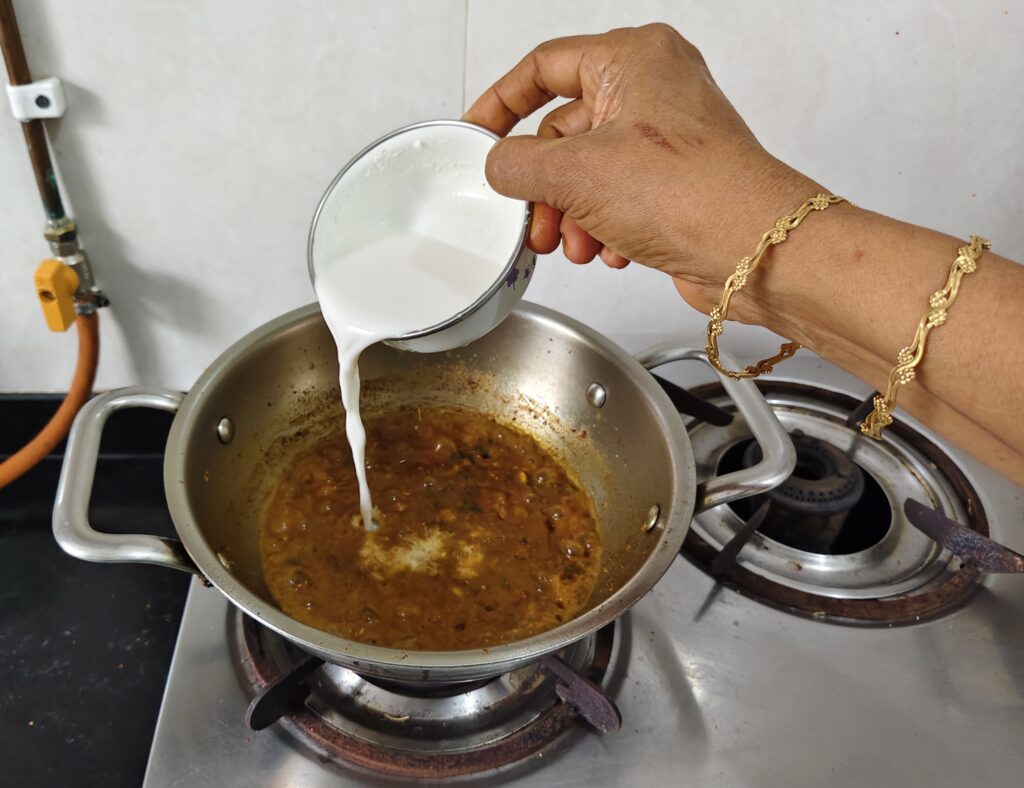
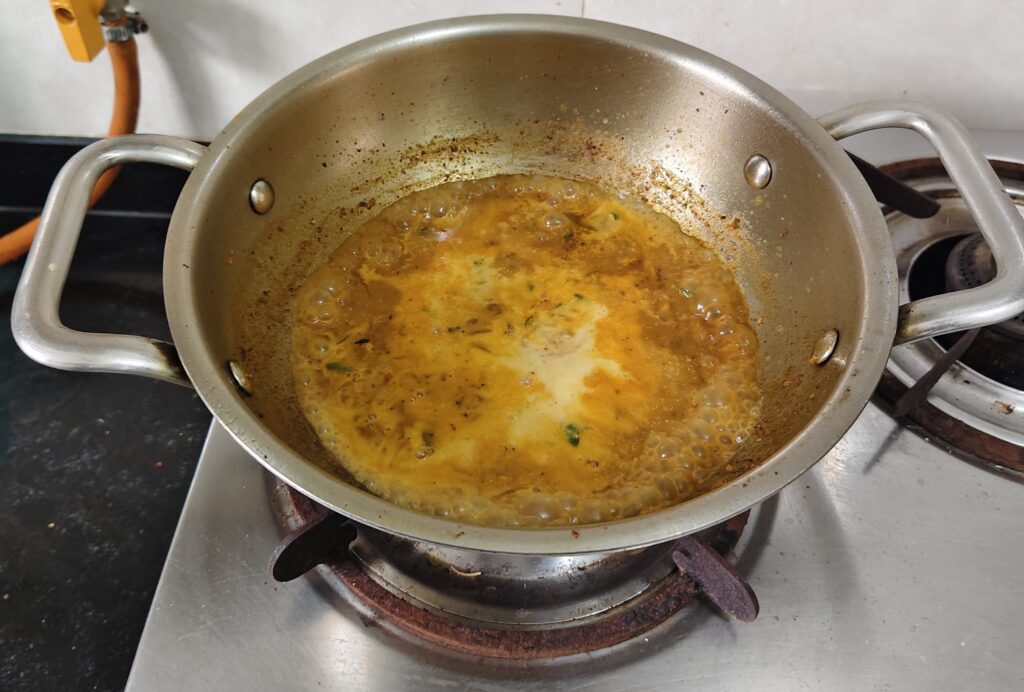
It is now ready to be served.
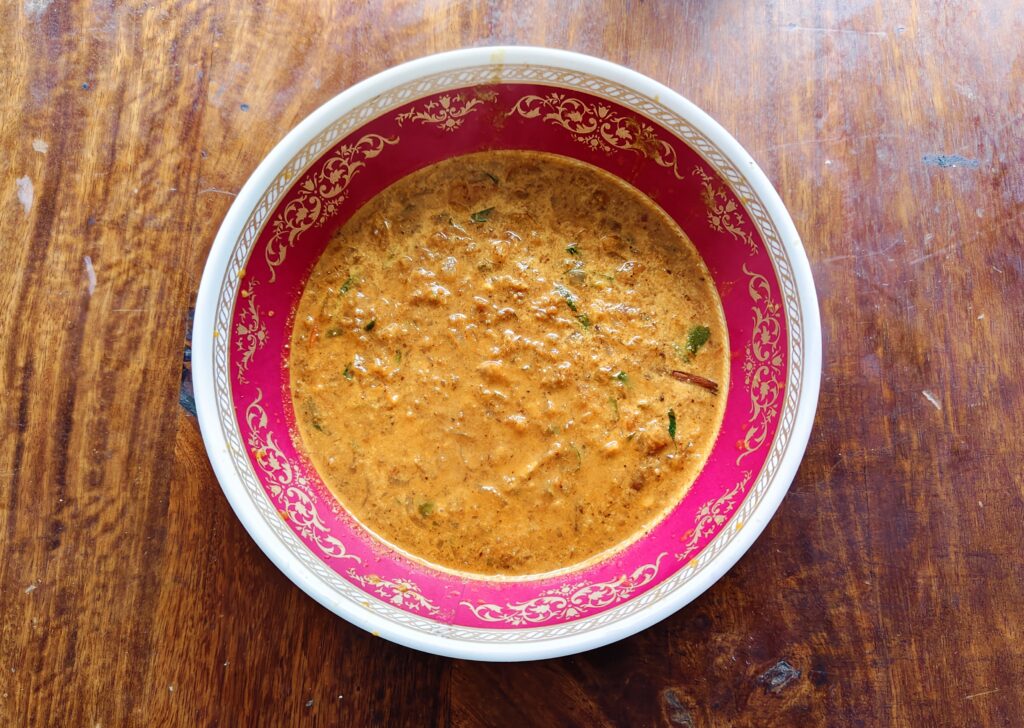
In our house we eat this for breakfast. The bread we use is appam. I will soon share recipe for appam. Along with maasi sambal we also pour coconut milk on the appam and sometimes add sugar on it. This we eat at the end of the meal.
I have fond memories when it comes to maasi sambal. It was not regularly made. It depended on the availability of maasi. Sometimes we also eat a dry sambal made with maasi. It is a different recipe that I may share later on.
If you can get your hands on maasi or maasi powder online or offline in your area, you must definitely try this simple yet extremely delicious recipe.
